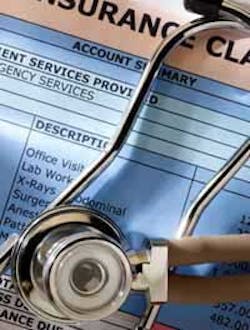Converting dental to medical billing
There’s a call to the dental profession to work with patients who are at risk. This is the compromised patient who has an illness that links to the whole body. You can bill these through risk programs added by dental insurance companies, or through medical insurance. It is within the scope of your practice and license! A large number of routine procedures performed in dental practices are billable to medical plans. Also, many procedures that have been billed only to dental plans can also be billed simultaneously to the medical carrier, with no fear of legal ramifications.
However, some basic steps should be followed:
1. Provide a medical intake from the first phone call and continue to ask questions throughout the visit. (This is the same way a medical office will go over the patient’s information.)
2. Provide risk assessments
3. Provide diagnostic tests
4. Have the patient referred by a medical provider
Procedures that are covered under medical contracts fall into these four categories:
1. Inflammation and infections – problems not treatable by entry through the tooth
2. Pathology – hard and soft tissue (apply to Medicare for a specific form)
3. Sleep apnea and TMD (apply to Medicare for a specific form)
4. Trauma – anything related to traumatic injury (get a copy of an accident report or get a written note from a witness)
Diagnostic: This includes examinations, consultations, radiographs (cephalometric X-rays, occlusal films, lateral jaw), and other diagnostics such as Oral DNA and salvia testing covered under this category. Salvia tests detect oral lesions (decay), periodontal disease, and HPV virus. Both dental and medical billing will require diagnostics to determine the medical necessity for treatment. Treatment needs a reason to be performed and diagnostics address that question.
Medical (i.e., non-surgical) treatment: TMD orthotics and sleep apnea appliances are covered with the proper paperwork and codes sent to the medical plans. Fluoride trays for at-home use are also billable when indicated for patients undergoing radiation/chemotherapy, and those with psychological/GI disorders such as anorexia and bulimia.
Surgical treatment: The removal of teeth in nontraumatic and nonemergency situations, including any type of impaction, and teeth requiring removal prior to radiation therapy or transplantation of organs or other similar circumstances are also covered benefits. In addition, the biopsy or excision of any hard- or soft-tissue lesions is billable to medical plans. The surgical placement of implants and periodontal hard- and soft-tissue (noncosmetic) procedures, such as osseous contouring, gingivectomy, alveolectomy, removal of tori/ exostoses, and frenectomy, are included in this category.
Treatment for traumatic injury: Any and all treatment of the teeth, supporting structures, and surrounding tissues that are damaged during a traumatic incident is covered under the comprehensive portion of the medical plan. This includes, but is not limited to, restorative, endodontic, surgical, implant replacement, removable and fixed prosthodontic treatment, as well as orthotics, stents, and the like. Analgesia/anesthesia for the control of behavior problems in the office (patients who suffer from anxiety) is also covered.
• Consults
• Exams
• CT scans, jaw X-rays and FMX
• Appliances – TMD/sleep apnea
• Cancer screenings
• Biopsies
When filing your claims, provide each insurance company with knowledge of the other on the claim form. The new dental form has a space to indicate medical billing, and the medical form has a space for other insurance. When this is done you can bill both medical and dental plans simultaneously. It is prudent, however, to bill dental plans only for tooth-related procedures (procedures of the tooth, not involving traumatic injury) and to bill all other procedures to the medical plans.
When a large, comprehensive treatment is planned, the diagnostics can be billed to both plans in order to satisfy the medical deductible. This allows for maximum coverage for the surgical portion of treatment, such as periodontal and implant services.
Conclusion
Don't be afraid to bill procedures to medical plans. Learn the codes and the language, the documentation and claim-filing requirements, and the billing protocol – and then go for it! Patients will be able to undergo all the necessary treatment with smaller out-of-pocket costs.
Make sure you verify all insurance information and ask what is needed to provide payment for a claim.
Contact Christine Taxin at 914-450-2906 or [email protected] for more information, or visit www.links2success.biz.

